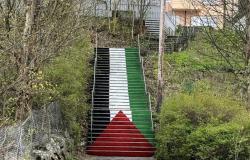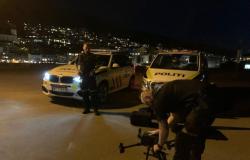Columnist This text expresses the writer’s personal views.
CAP changes every five years, where the Commission comes up with proposals that must be approved by the EU Parliament and then basically stands with various regulations for the next round. Today’s CAP applies from 2023 to 2027, even though it was only adopted towards the end of 2023.
That of organized agriculture the opportunity to influence policy then occurs through lobbying against the commission, the parliament and key national politicians who in turn are expected to be able to influence the commission and national representatives.
Nevertheless, the policy is that uniting a French grain farmer, an Italian olive producer, a Spanish pig farmer and a Polish dairy farmer in a political framework demanding in itself, and especially when these are to be united in common demands externally. The production conditions and the markets are different, but nevertheless they must be in a common market and compete on more or less the same terms.
Furthermore, influence must and political work takes place through the joint European farmers’ association COPA, which will embrace all of this complex agriculture. And there is no right to negotiate at the bottom, on the other hand, agriculture must engage in lobbying in competition with other social actors.
also read
Must talk more about the EEA, says Jonas Gahr Støre
The Norwegian agricultural model stands out today as unique in the world and, in contrast to CAP, has annual reviews and updates in a cooperative system where organized agriculture through the trade unions has the right to negotiate.
In Norway, there is thus a system that both gives influence, but also entails duties and loyalty to concluded agreements. It must result in an efficient and targeted system which means that both government and industry pull in the same direction when agreement is reached.
In the EU, however, there are few other possibilities than demonstrations when “lobbyism” does not lead. Not only does agriculture in Norway negotiate framework conditions related to income opportunities, but also the climate agreement between agriculture and the state shows a different model than in the EU, where different requirements are imposed on agriculture that also vary between countries. They are squeezed between Brussels and their own authorities without the right to negotiate with anyone.
At the same time, it is significant competition between the member states within all sectors both for raw materials and industrial products because they are within the same customs area from Lapland to Andalucia. There is very limited market regulation and should prices fall too much, the Commission can buy up some goods at minimum prices such as skimmed milk powder and butter, but must then make agreements with private players for storage and this happens to a limited extent and for a specified period.
In Norway, it is thus a system that both gives influence, but also entails duties and loyalty to concluded agreements.
Norway has an organization where private actors, cooperatives, have undertaken the regulations against compensation via fees paid by the farmer and both fees and compensation are adopted through the trade council made up of parties. In other words, a private arrangement with private money, versus a public mechanism in the EU. This is probably why the scheme in Norway has survived since the 1930s, adapted on an ongoing basis, but the principles have been safeguarded.
In CAP there is none size limitation for the units such as Norway has for poultry with, among other things, a maximum number of 7,500 laying hens or for fattening pigs where the license allows up to 2,100 pigs throughout the year. In Denmark, in 2022 almost 900 of the 2,400 pig farms had over 5,000 pigs at any one time and the average was 5,200 pigs. About 20 million pigs are slaughtered in Denmark vs. 1.5 million in Norway.
The structure varies, however much between countries, but everyone must live within the framework of the common agricultural policy.
In Sweden, the average size is for the dairy farms now passed 100 dairy cows spread over 2,600 farms, in Denmark it is approaching 300 dairy cows and there are no size restrictions. Until 2015, there were national milk quotas in the EU, to avoid loss of production in the least competitive countries, but these were removed to increase international competitiveness.

also read
Big money and elitism show through Norwegian cracks
In Norway, the average size is just over 30 cows and the maximum quota in milk production has recently been lowered to 700,000 liters per farm, but the average is 250,000 litres. The production average in Denmark is about 10 times higher. In Norway, the quotas are also used to manage domestic production and they can mainly only be traded within the current (2024) counties.
The Norwegian agricultural model contains tools and management principles from the last three generations, that is, from both before and after the Second World War. It is, together with the US agricultural policy, probably the oldest model in the world, with the most comprehensive toolbox, which is constantly revised and constantly adapted to new needs.
The GATT agreements 1947-1985, escalation in the 1970s, the EEA agreement in 1994 and the WTO agreement in 1995 have been handled together with new climate and environmental requirements in the 2010s. While the EU’s policy, CAP, is significantly newer and has changed more quickly and to a greater extent.
Agriculture’s distinctive features have not fundamentally changed since the 1930s, biology’s limitations and long adaptation times are the same. Furthermore, changes in weather and climate create a need for long-term planning and risk mitigation, while the market’s unpredictable and sometimes brutal fluctuations must be remedied with a well-stocked toolbox, to ensure income opportunities and future production.
At the same time, the agricultural production potential far higher than consumption potential, which makes production regulation necessary
The Norwegian tasks the agricultural model is set to solve, it still seems well suited to it, given the necessary ongoing adaptations and, not least, sufficient funding. This means that there are fewer farmers on the streets in Oslo than in Brussels – and that the farmers use other means of action.

also read
Where will we get the food from?
Tags: Professional talk Big differences Norways EUs agricultural policy
-







